Buckwheat groats and water are all you need to make this incredibly easy fermented buckwheat bread recipe. This yeast-free, vegan, and naturally gluten free buckwheat bread recipe is incredibly easy to make, and it’s soft, moist, and healthy, too! This is surely going to become your new favourite recipe!
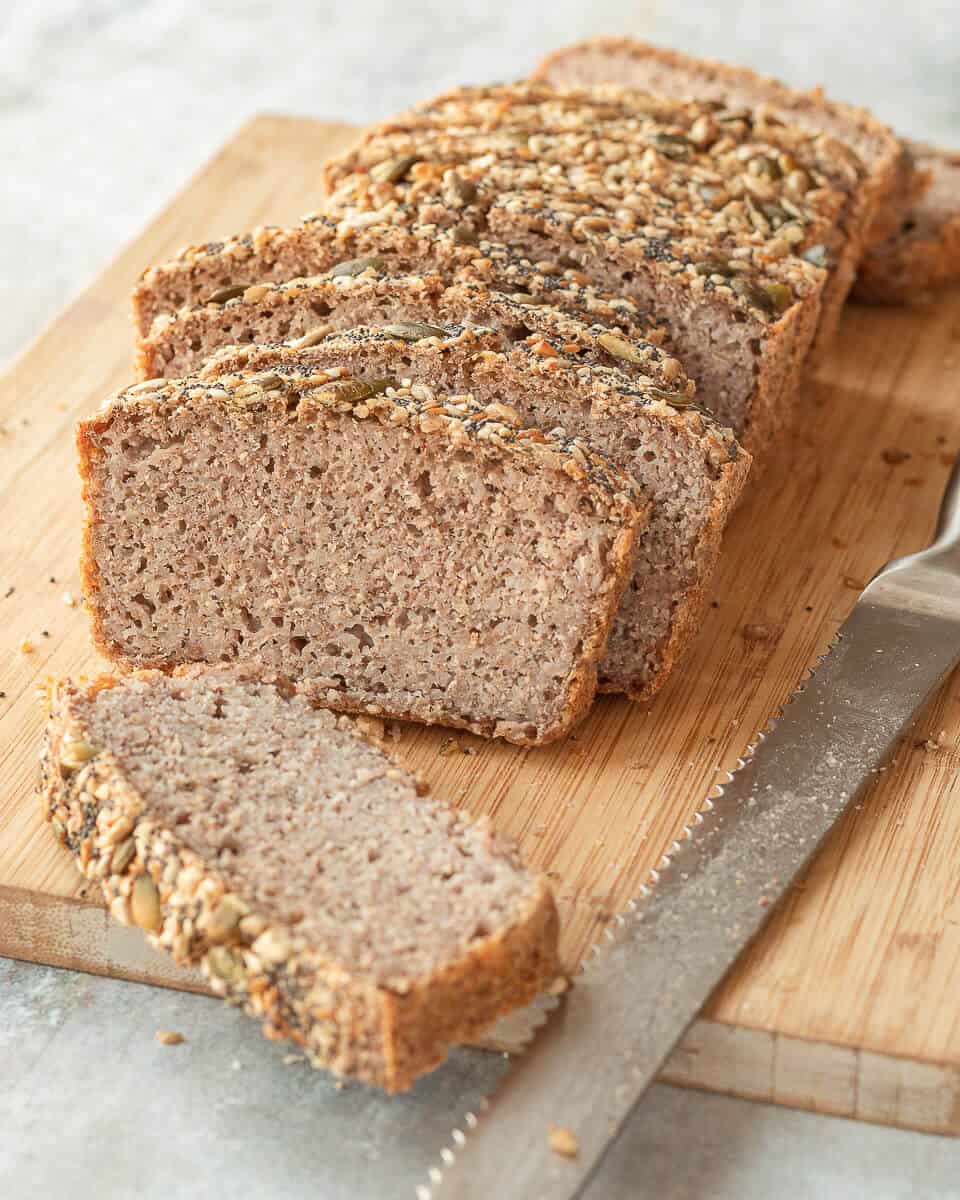
When someone asks me: “What’s your favourite food?” – my first instinct is to say bread. I just can’t think of anything more enticing than a thick slice of freshly baked bread with an equally as thick layer of salted butter on. You know the way the butter melts and sinks into the crevices of the bread? THAT.
As you can probably tell, I’m rather passionate about bread. The only problem is that I’m honestly not very good at baking bread. I’ve always wanted to make a successful sourdough loaf (I’m working on it!). However THIS gluten free buckwheat bread kind of changed my life the first time I made it.
Similar to making sourdough, this gluten free bread does require some time to ferment, but the good thing is that it doesn’t take a week or two, but merely a day and a half! And I promise it’s worth the wait.
I’m still rather taken aback by the fact that this bread is made from only buckwheat groats and water.
** While I have made some adjustments to this buckwheat bread recipe, all credit for this magical bread goes to Melissa at Breadtopia.com. Check out her Gluten Free Fermented Buckwheat Bread.
Why you’ll love this gluten free buckwheat bread recipe
- Simple and Nutritious: Made with just buckwheat groats and water, this recipe is a minimalist’s dream, yielding a gluten-free, vegan bread that’s both nutritious and delicious.
- No-Knead, Easy Process: Perfect for both novice and seasoned bakers, this recipe requires no kneading and takes advantage of the natural fermentation process, simplifying traditional bread-making.
- Customizable Flavor: Offers the option to personalize your loaf with the addition of seeds and salt, allowing for a tailored bread experience that can suit any palate.
Gluten Free Buckwheat Bread Ingredients
ALl you need are these simple ingredients to make this bread!
- 350 g Raw Buckwheat Groats
- 250 g Water
- Optional: Salt and seeds
Gluten Free Buckwheat Bread Equipment
- Glass bowl
- Blender
- Loaf pan
How To Make This Fermented Buckwheat Bread Recipe
This gluten free buckwheat bread recipe may seem a bit daunting at first, but once you make it you will see just how straightforward it really is. Stick with me, I promise it will be worth it!
This recipe consists of five simple steps:
Step 1: Soak
To start the fermentation process, you need to soak the buckwheat groats in water for 12 hours. Add the groats to a glass or ceramic bowl, and cover with water. There should be at least 3 cm of water above the top of them as they do absorb some of the water and will ‘grow’ a bit. Cover the bowl with a tea towel and leave it on the counter for at least 12 hours.
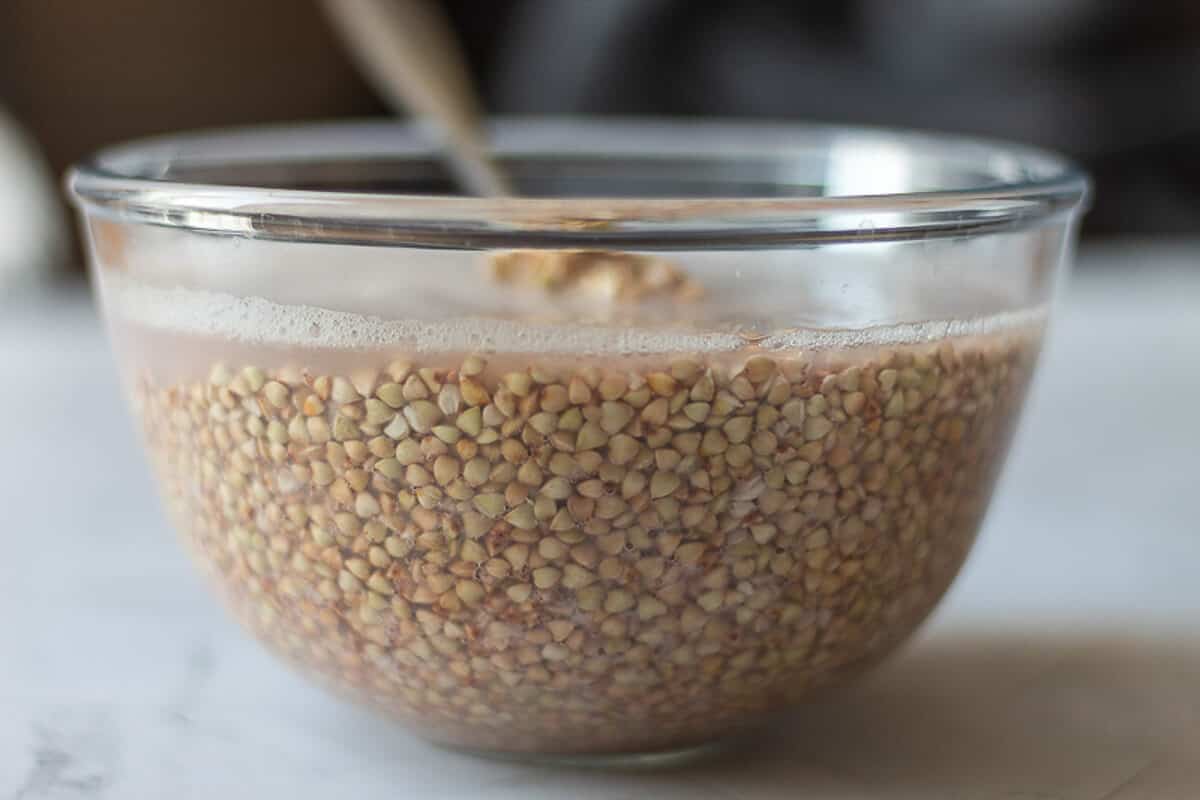
Step 2: Drain
After the twelve hours have passed, tip the contents into a sieve or colander and leave to drain for 5 minutes. DO NOT RINSE!
Step 3: Blend
Place the drained buckwheat in your blender or food processor along with the fresh water. Blend until smooth!
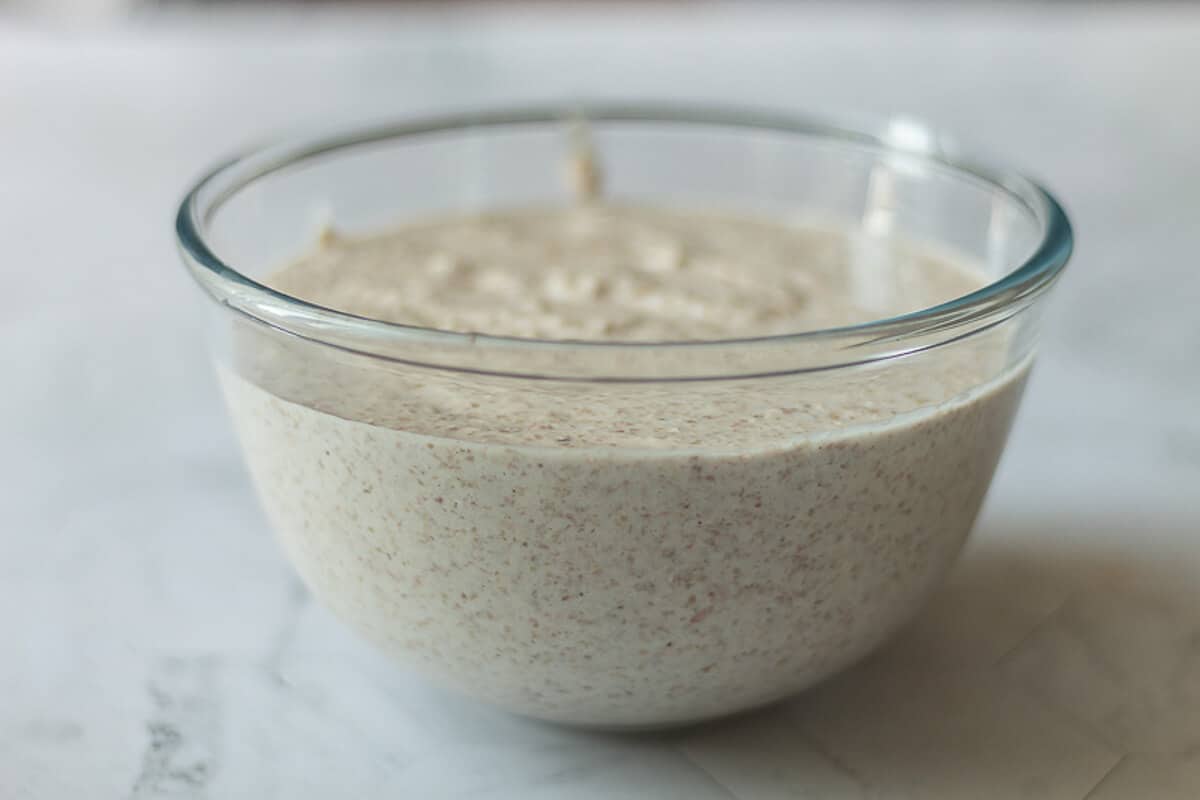
Step 4: Fermentation
Once the mixture is smooth, pour it into a clean bowl, cover it again and set it aside on your counter for 24 hours. Yes, I know this seems like a lengthy process but I promise it’s worth it! Make sure there is enough room in your bowl for the mixture to rise a bit as it ferments.
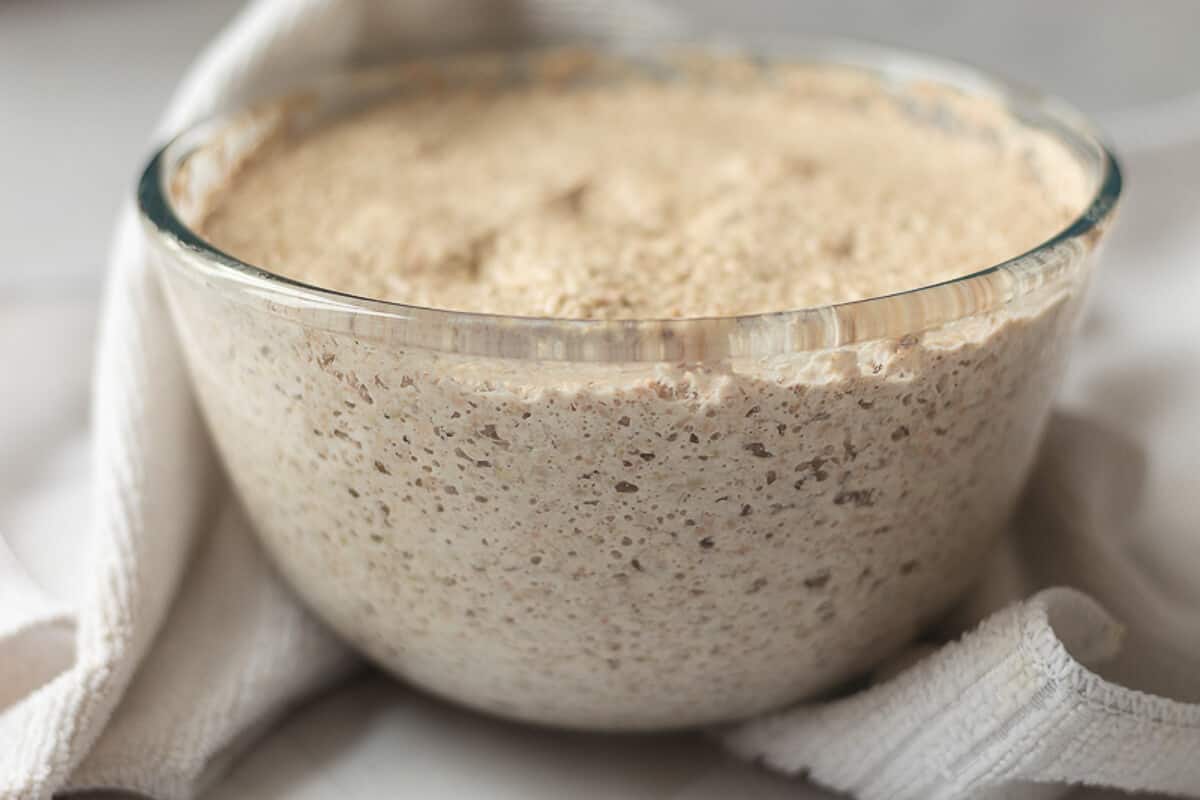
Step 5: Bake
Once the fermentation process is over, line a loaf pan with baking parchment paper and bake!
Baker’s Tips For Fermented Buckwheat Bread
- GREASE YOUR BAKING PAPER! I’m not sure if my baking paper is poor quality, but it almost always sticks to the bread if I don’t grease it when making this bread – this is possible due to there being no fats in the ingredients. So grease your “greaseproof” paper.
- Don’t disturb the mixture when it’s fermenting. Just cover it and let it do its thing.
- Find a nice warm spot for your bowl, you don’t want it in sunlight, but you don’t want it to be in a cool spot as it may have some trouble fermenting.
- I highly recommend adding some seeds and salt to the mixture for extra yumminess! You could also add some seeds to the top to make it pleasing to the eye!
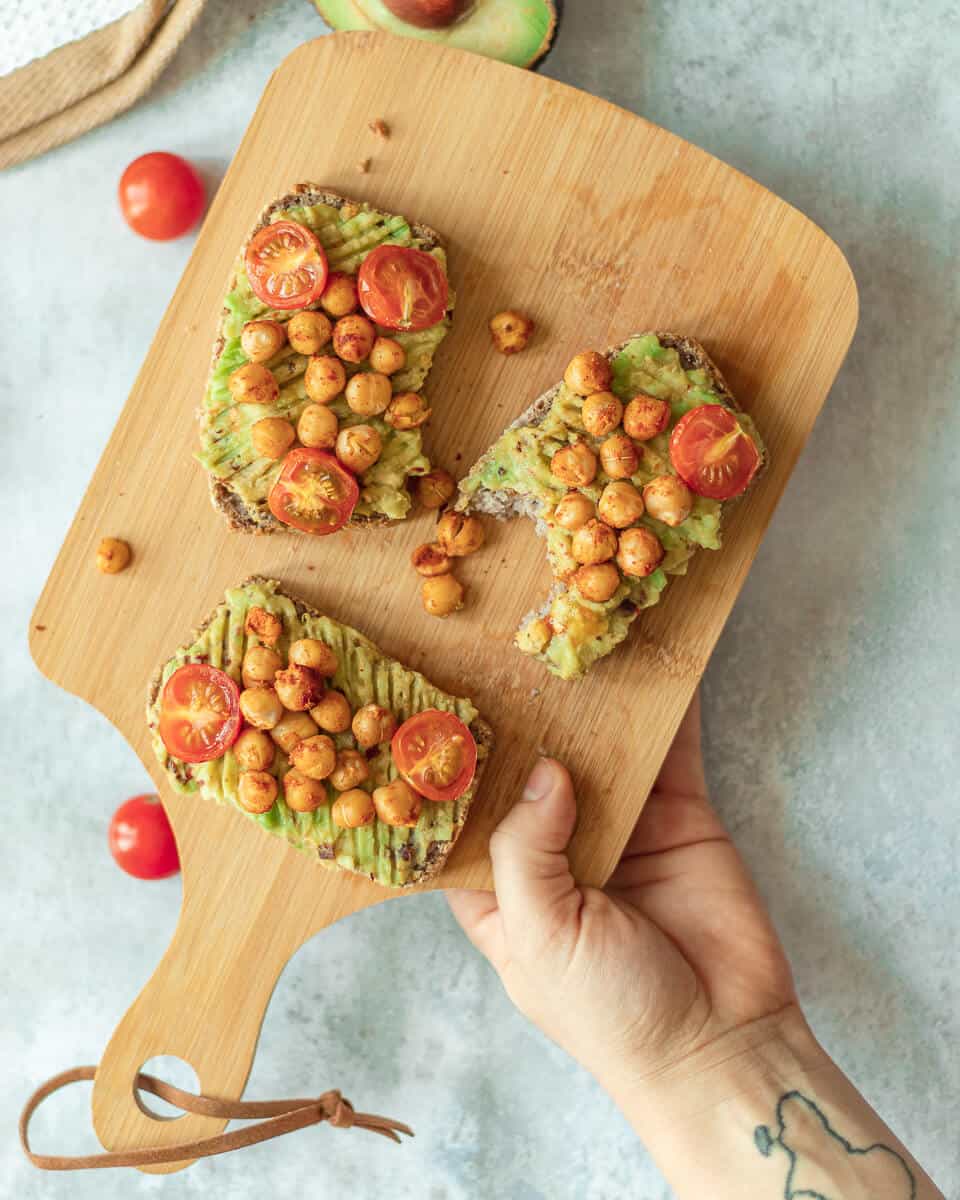
FAQs
How To Store Fermented Buckwheat Bread
Store in an airtight container in the fridge for around a week, or you can slice it up and freeze it, I recommend wrapping the slices individually with some parchment paper. Once ready to eat, leave to thaw in the fridge or toast from frozen.
Do not leave this on your counter after baking as it will go mouldy within three days (trust me!).
Can I use dark buckwheat flour instead of raw buckwheat groats for this homemade buckwheat bread?
Yes, you can use dark buckwheat flour, but the texture and flavor may differ slightly. When using dark buckwheat flour, start with a 1:1 ratio to replace groats. Keep in mind that the fermentation time may also change. Homemade buckwheat bread made with buckwheat flour might be denser than the one made with groats. Additionally, using buckwheat flour may require adjusting the amount of water to achieve the perfect dough consistency, as buckwheat flour can absorb liquid differently than groats.
Is baking powder necessary for this gluten free recipe?
No, baking powder is not needed in this recipe. The fermentation process naturally helps the bread to rise, making it unnecessary to add baking powder or any other leavening agents. This keeps the recipe simple and maintains the integrity of the gluten free buckwheat bread.
Can I substitute buckwheat flour instead of buckwheat groats?
I recommend sticking with buckwheat groats for this recipe, as adding different gluten-free flours may change the bread’s consistency and taste.
Can I bake this fermented buckwheat bread in a bread machine instead of a loaf pan?
This recipe is tailored for baking in a traditional oven using a loaf pan. While it’s possible to try it in a bread machine, the results might not be the same, as bread machines often include mixing and proofing steps that are not required for this bread. If you decide to use a bread machine, use the bake-only setting and monitor the results closely.
Is it beneficial to grease the baking tin with coconut oil for this gluten free breads recipe?
Greasing your baking tin with coconut oil is a good idea, especially as this recipe contains no added fats. Coconut oil not only prevents sticking but also can add a slight coconut flavor to the crust. Remember to preheat oven before baking, as an even temperature is crucial for the perfect bake.
If you like Buckwheat, you may also enjoy these recipes:
- Vegan Buckwheat Pancakes
- Sweet Potato Brownies with Buckwheat Flour
- Single-Serve Tiramisu
- Buckwheat Banana Muffins
BAKING IN GRAMS
All of the recipes I create are tried and tested a few
times until it has been perfected. My goal is to develop recipes that are
simple to make and easy to follow so that anyone can make them – even if you’ve
never baked before!
One very important thing that will ensure that you get the best results is
to measure your ingredients by weight! I recommend purchasing a kitchen scale,
they are very affordable and it will honestly change your baking game for good!
Not all measuring cups are made equally – for example, a cup of buckwheat flour to me weighs 120g, but for you, it may be anywhere between 100g and 200g – that’s a
BIG difference!
If you don’t have a kitchen scale yet, you can use this Ingredient Weight Chart as a guideline to convert the
ingredients to help you!
Now – dust your apron off and get baking! x
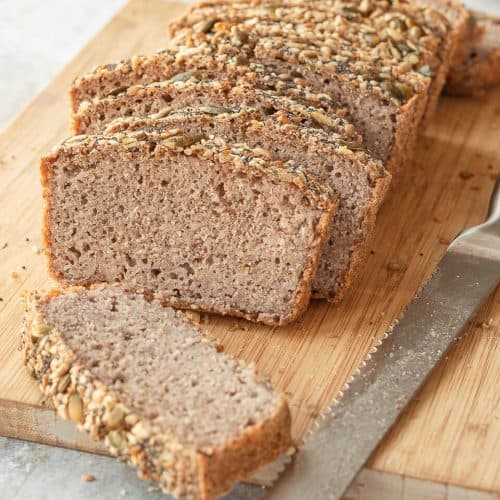
Fermented Buckwheat Bread
Equipment
- Glass Bowl
- Loaf pan
Ingredients
- 350 g Raw Buckwheat Groats
- 250 g Water
- Salt and Seeds optional
Instructions
- Add the buckwheat to a large glass bowl and cover with water. Cover the bowl with a tea towel and set it aside on the counter for 12 hours.
- Drain the water (but do not rinse) then add to a blender along with 250 grams of fresh water. Blend until a smooth batter forms. Pour into the cleaned bowl, cover with your cloth and leave for 24 hours.
- Fold in some salt and seeds and then pour the batter into a 1lb loaft pan lined with grease-proof paper.
- Preheat the oven to 180°C (160°C fan / 350°F) with the loaf in the oven and bake for 60 minutes. Insert a toothpick to check the doneness - it should come out clean. If there is still sticky dough on the toothpick, bake for a further 5 minutes.
- Remove the bread from the tin and peel off the paper (careful, it's hot!) Leave the bread to cool on a wire cooling rack for at least 30 minutes before slicing!
Notes
- Please see the blog post contents for even more details and some process shots!
Nutrition
I hope you love this gluten free buckwheat bread recipe!

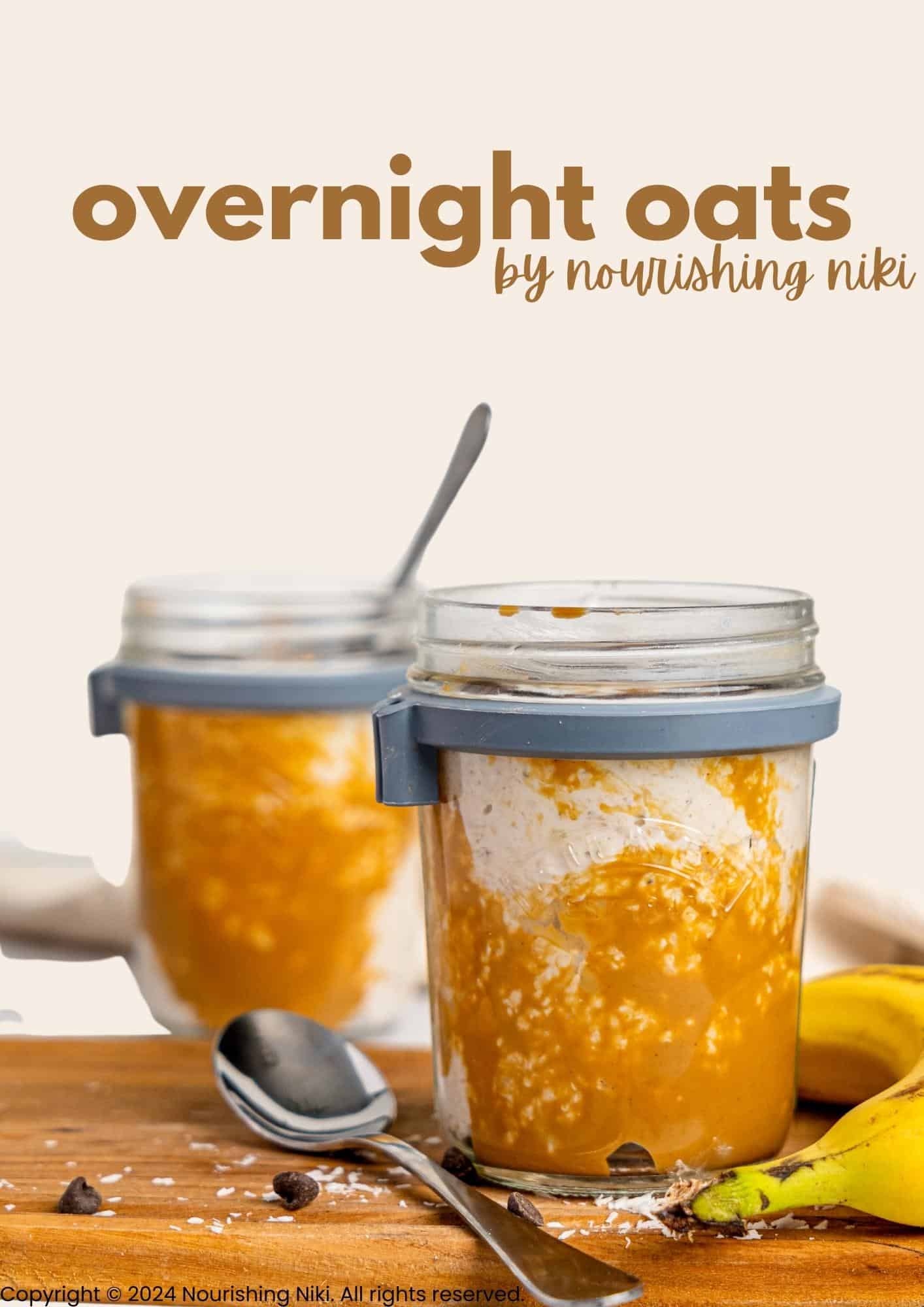
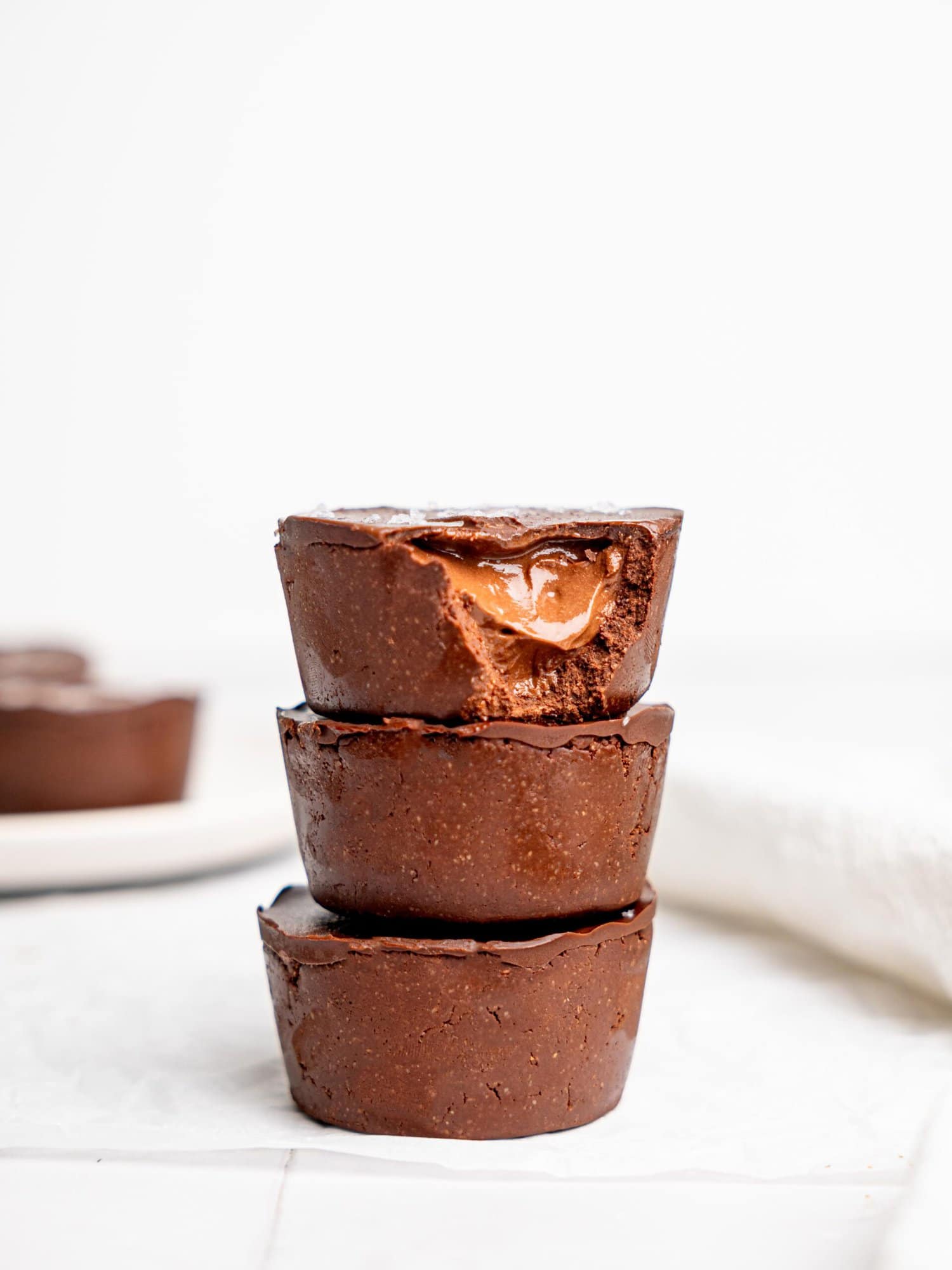

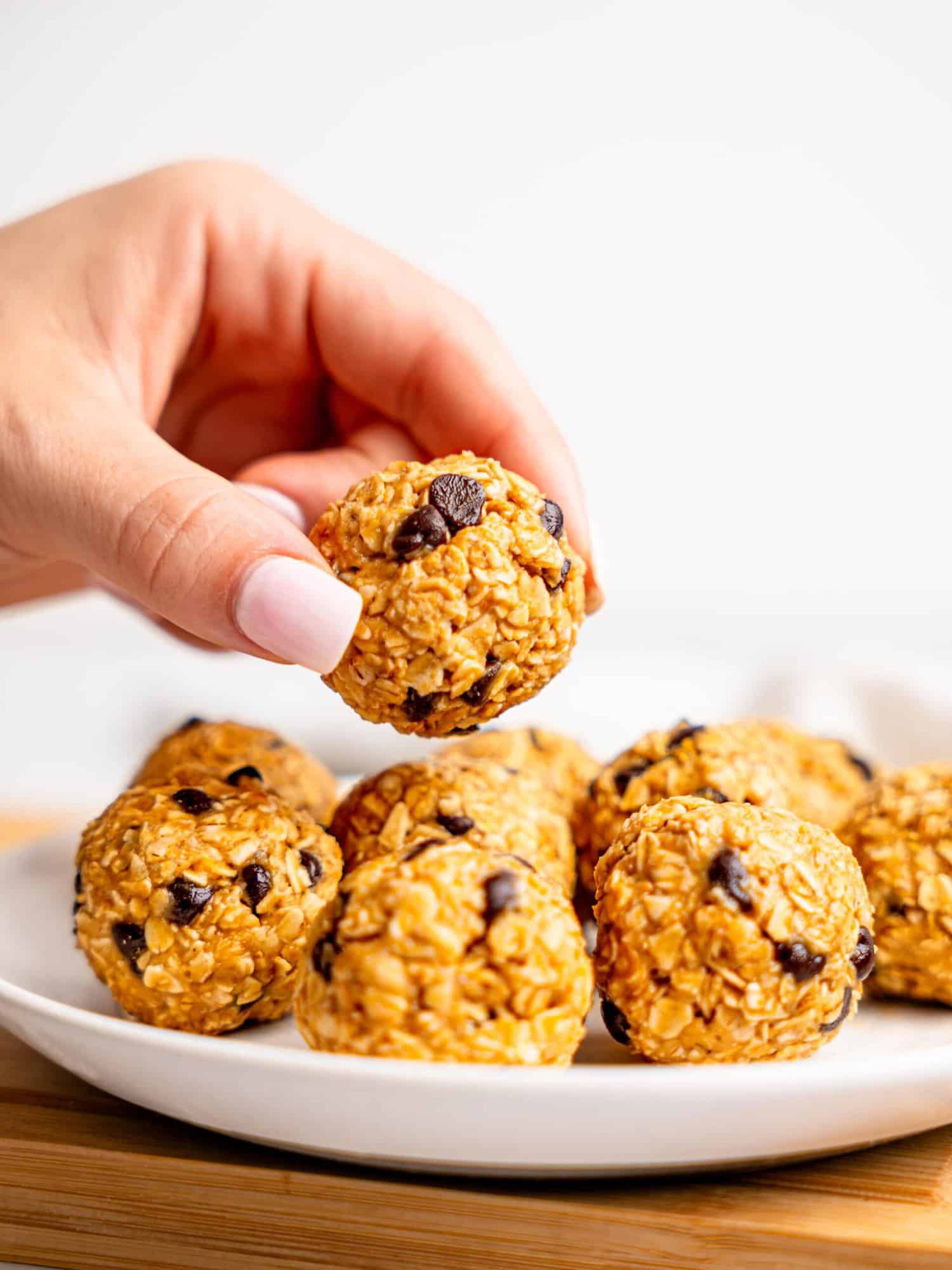
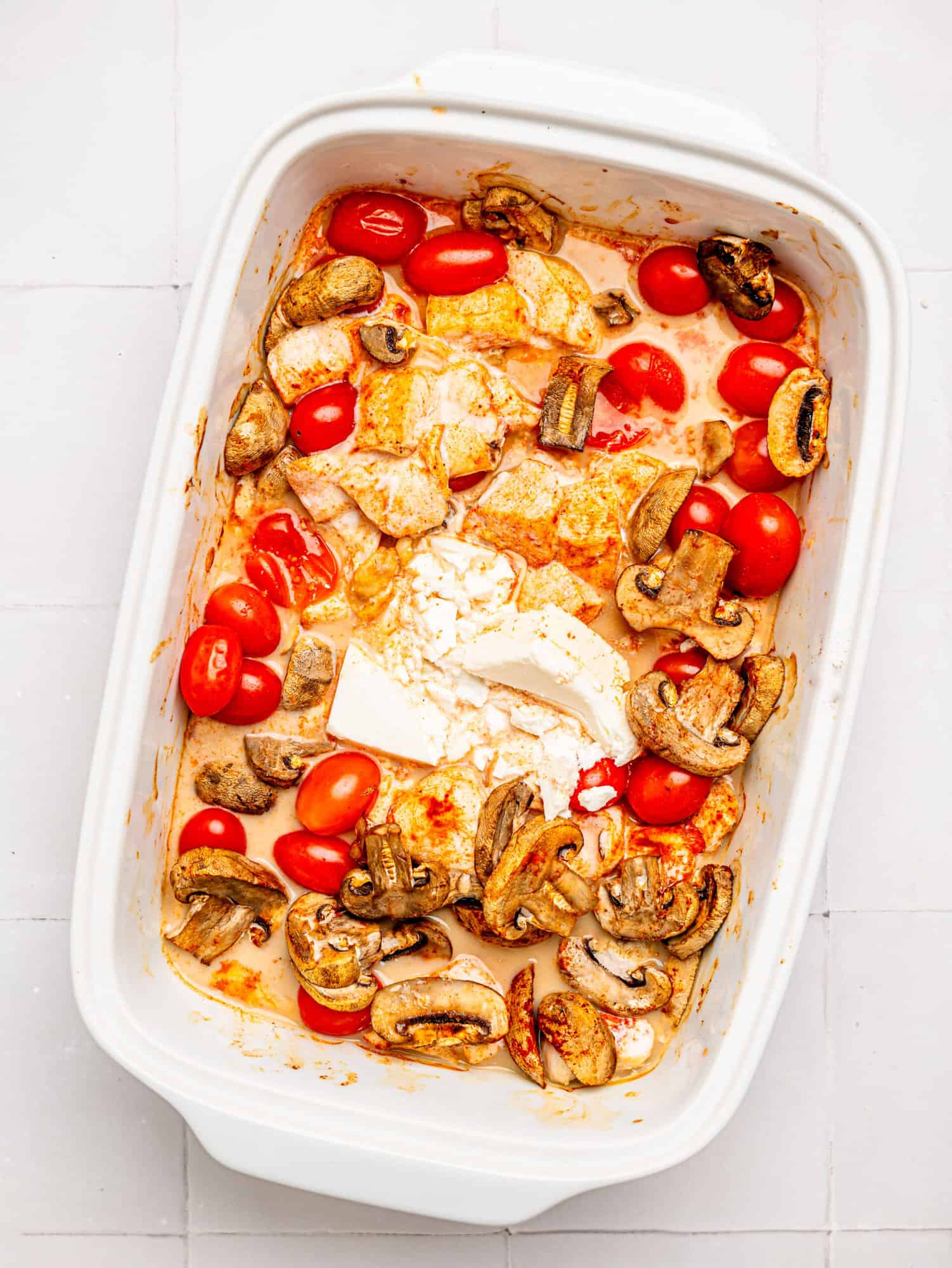






Thank you for this recipe! I add pumpkin and flax seeds to the mix and the bread is absolutely delicious 🥰
This looks great! How much salt would you add to this recipe? Thanks!
Yes, I too would like to know the salt ratio. 🙂
I add around 1/2 a tsp 🙂
Great question! I add around 1/2 a tsp 🙂
I am not sure what went wrong but I made this bread exactly according to instructions and it just came out as a doughy unusable mess!!! I had to trow it away!
Aww I’m so sorry to hear that! There are many factors that could cause this (mostly environmental differences), it does seem to be a bit hit or miss for some unfortunately. I will make this bread again and double check everything is correct. 🙂
Love this! My new go to bread!!!! I add turmeric and all sorts of seeds!! Mmm
Ahhh this sounds incredible! I definitely have to make this bread again, it’s been YEARS!
Най-ужасната рецепта! Водата е много, стана на каша всичко! Елдата СЕ ИЗМИВА многократно! В руски сайт има канал “Самовар”, виж там как се прави това!
The mixture started to smell really badly after only 12 hours leaving it (second process). Not sure it is still edible now…
The bread is meant to ferment so it should have a sour smell!
After fermentation the batter had a fishy smell. Is that the way it’s meant to smell or did it somehow spoil?
OH NO – mine has never smelt of fish! I don’t think that’s okay 🙁
I tried it (winter in Europe). Let it first 12 hours in the water, drained, then 24 hours to rise.
Baked 90 minutes in the oven.
perfect 🙂
YAYYYY so happy you’re happy with this buckwheat bread!
Turned out perfect. To convert from grams, I used 1 1/2 cups buckwheat and 1 cup water. I added salt, pumpkin seeds and flax seeds.
YAYY! This makes me so happy to hear! I’m so glad you enjoyed it xx
I’ve made this bread 3 times now. It’s a little different each time bc the weather is really fluctuating now-teens to 50’s, but I liked each one. Now I’m going to use this recipe and make pumpkin seed, craisins crackers and dehydrate them. I’m anxious to see how it turns out. We need crackers for our winter soups. My Russian friend was elated when I took buckwheat bread to church fellowship meal today. She cannot find raw buckwheat in our small town. I ordered 55# online. Shipping cost 1/2 the amount of the product!!!
Thanks for this wonderful recipe. Leona
Aww this makes me so happy to hear! Well done for making it and good luck with the crackers – it sounds wonderful!
Followed the recipe to the letter. No bubbles at all, no increase in size. Not unpleasant when cooked, but couldn’t be called ‘bread’. I don’t think I did anything wrong as I successfully make sourdough twice a week for my husband – just wish I could eat that!
Wanting to add some tapioca flour to make the loaf bigger. . . any ideas if I should then add some baking powder or a little yeast to aid the rising ? Thanks
Hi, I bought toasted buckwheat groats, does that work? Can I use the same measurements?